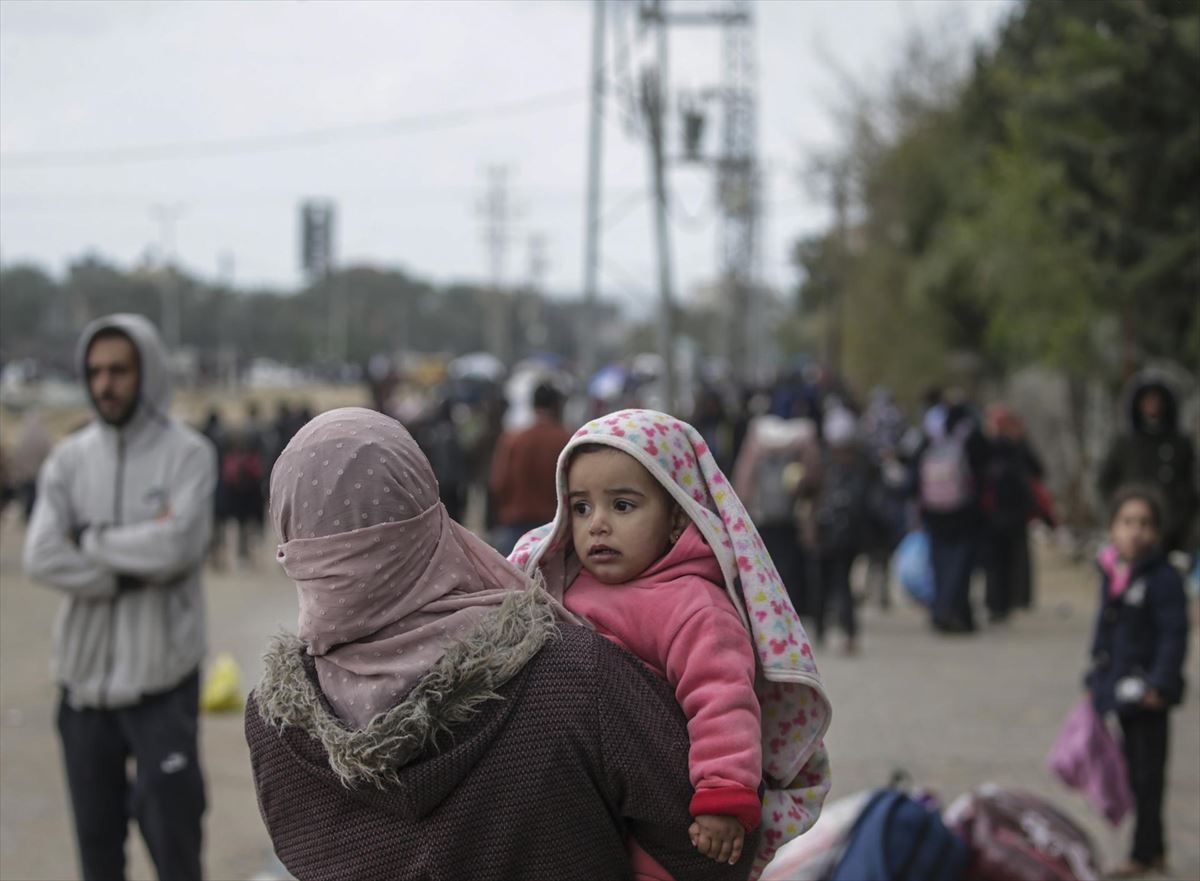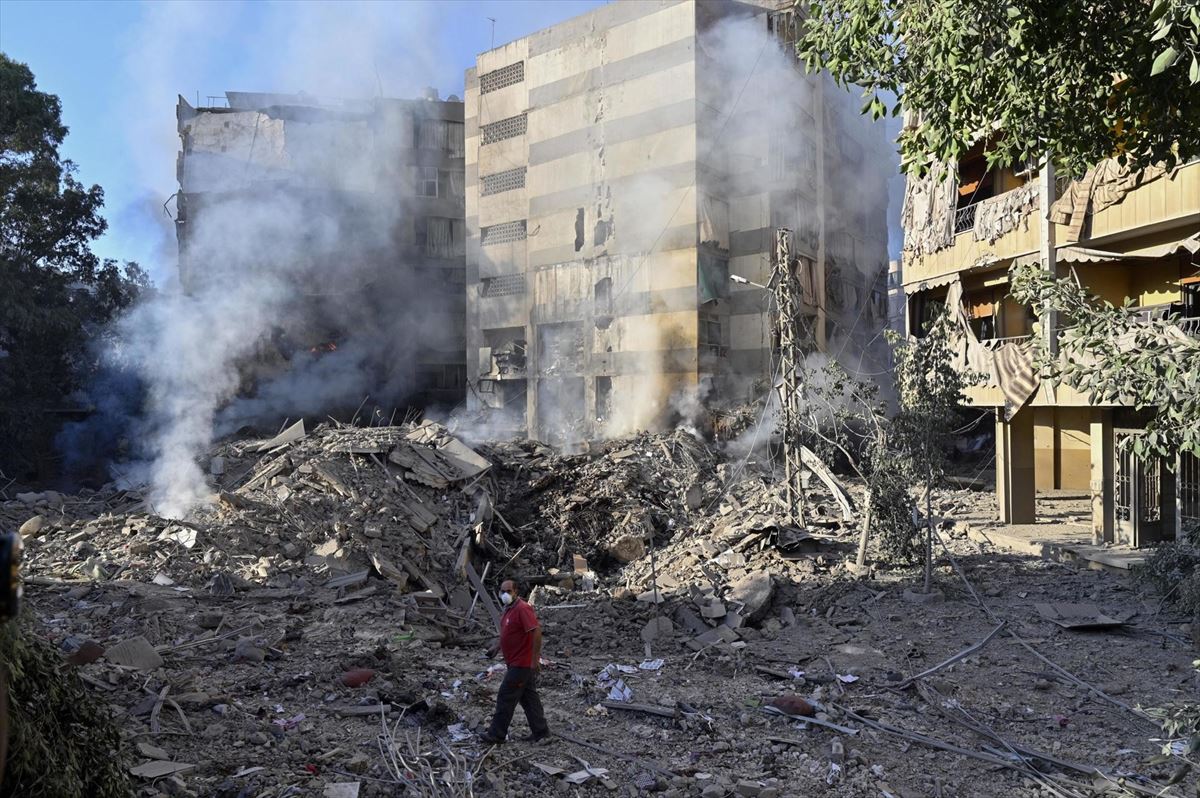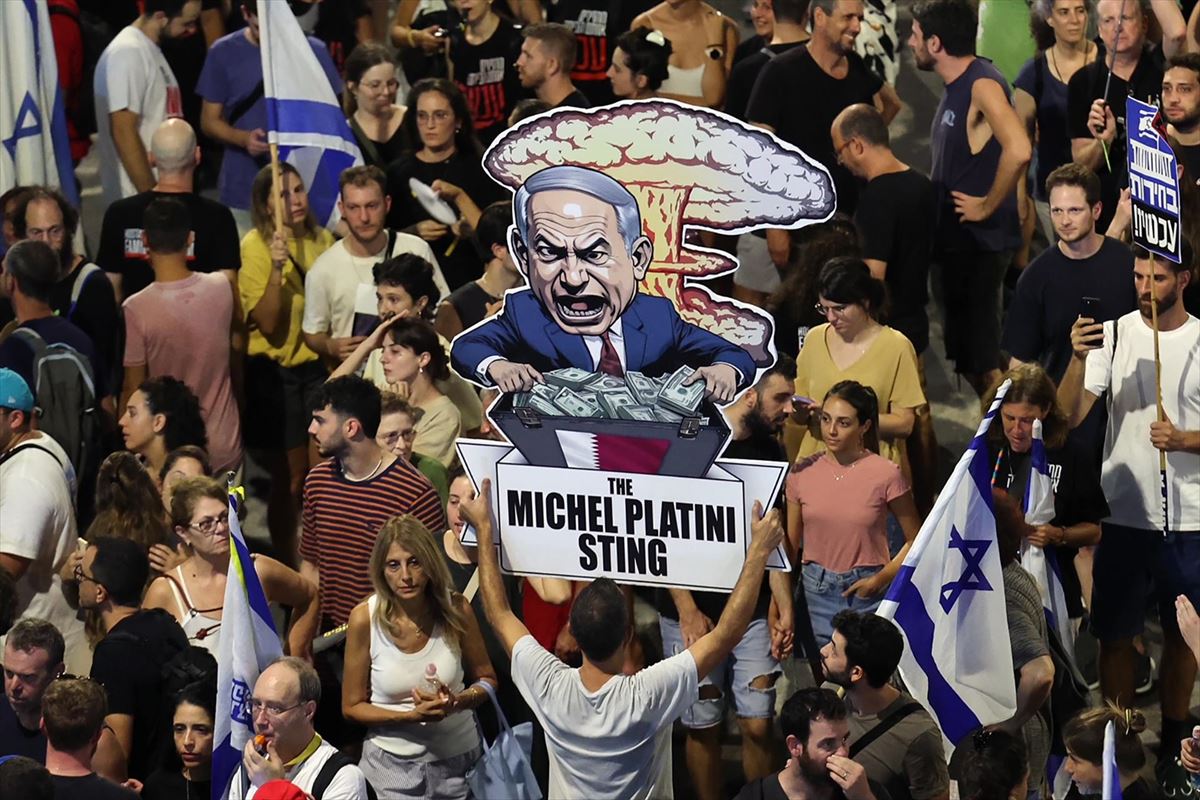Nearly 42,000 people have died, nearly 97,000 are injured and 10,000 are missing. Currently, 90% of the population is displaced and Lebanon is suffering a wave of Israeli bombings unprecedented in decades.
The intensification of the Israeli offensive in Gaza, which gained momentum on October 7, 2023, is the “final” episode of a historic conflict that has seen as many scenarios as turning points, none of which are even remotely comparable to the current escalation, in terms of the number of victims. , damage and forced displacement.
OCTOBER 7At around 6:30 a.m., Hamas’s armed wing, accompanied by other armed groups and Palestinian civilians, launched a “coordinated and complex” attack, according to the subsequent assessment by the United Nations and the Israeli military, against Israeli communities in the Gaza Strip border, under cover of the massive launch of 2,200 rockets against Israel. The attack more than delivered 1200 deadof whom 809 civilians and 314 military personnel. In total, approximately 14,970 people were injured. At least 252 people were kidnapped.
Around 6 p.m., Israel declared the state of war: the beginning of one unprecedented military operation against the Gaza Strip.
OCTOBER 8: The Hezbollah militias began their rocket attacks on communities in northern Israel, at the beginning of the regionalization of the conflict and the hardening of the strategy of the Israeli army, which, already active on three fronts, on the 27th of that month started . large-scale invasion of the Gaza Strip.
During that week, thanks to an intense process of international mediation, Israel released 240 Palestinian prisoners in exchange for 105 civilians kidnapped by Hamas, which in the first days seemed to be a first impulse towards a ceasefire enduring, expectations that eventually crumbled.
Israel denounced Hamas’s failure to free all women and children, while the Islamist movement accused the Israeli army of continuously violating cessation of hostilities rules and crippling foreign aid to the blockaded enclave with the aim of crippling the population to suffocate.
It meant the end of the armistice intensified bombings Israelis in the enclave, the acceleration of their ground operations and the certainty that the consequences of the war are finally slipping out of the hands of the international community.
6% of the population is dead or injured
The following months were marked by the existence of two simultaneous cycles of destruction in Gaza and ““international disability”Me to stop her.
He 6% of the population from Gaza dead or has been wound in a year of Israeli bombardments on this Palestinian territory.
Almost 42,000 people diedwhile the injured are close by 97,000to which the 10,000 missing which are believed to be under the rubble. It is also estimated that a quarter of those injured have suffered injuries that will leave them incapacitated for the rest of their lives. There are still some around 100 hostages in Gazan territory.

Nor should we forget the damage done to Gaza’s healthcare system by the ongoing attacks, of which there have been at least 516, killing 765 people, while shortages of medicine, fuel and labor continue. More than a thousand deaths occurred on the part of the medical staff.
43% of hospitals are very partially functioning, with a total capacity of 1,500 beds, while there are another 650 in ten field hospitals. Around the 66% of the structures of Gaza are destroyed by Israeli attacks.
Before the conflict worsened, 20% of the population had been diagnosed psychological disorders and the impact of twelve months of hostilities makes us fear the worst in this respect. There are also no services in oncology, MRI and specialized pediatric surgery, among many other essential healthcare services.
Humanitarian aid reaches the lowest level
The Gaza Strip continues to suffer dozens of victims every day and the number is still rising needs humanitarian efforts that have been even less satisfactory in recent months due to reduced access of convoys to the Palestinian enclave.
International organizations have denounced since the war broke out that Israel’s political and military authorities have made it difficult for humanitarian aid to enter the Palestinian enclave. Added to this are the hostile actions of extremist Israeli civilians, who have even attacked convoys loaded with aid and basic supplies on the road to the Gaza Strip.

The United Nations estimates that before the war, around 500 trucks entered the Gaza Strip every day, while last August only 1,559 trucks were able to cross the Kerem Shalom and Rafah crossings – the only ones that remain operational despite the warning being declared this summer famine in some parts of Gaza.
About 1.9 million Palestinians (de 90% of the population) currently displaced because of the offensive. Some of these Gazan civilians have been forced to change locations several times after Israeli attacks, even in areas classified as ‘safe’.

Gazans now face rampant hunger, the spread of disease, massive destruction, a decimated healthcare system, water and sanitation, and a severe lack of basic needs.
Lebanon is on the front page
Israel and the Lebanese Shiite group Hezbollah are now carrying out their worst clashes in a year, as Lebanon suffers a wave of Israeli bombings unparalleled in decades. Lebanon’s Ministry of Health has estimated more than 2000 dead and in some 9600 injured in the country as a result of Israeli attacks over the past year.
The cycle of violence in this scenario, essentially secondary, has changed the past forever September 17when Israel simultaneously blew up thousands of pagers in the hands of Hezbollah members in the south and east of the country, and in the southern suburbs of Beirutthe most important bastions of the country.

More than two weeks later, the Lebanese are still trying to come to terms with the events that have unfolded rapidly since, with their country under constant bombardment and Israeli forces invading their territory to deal with Hezbollah in border areas.
In this escalation, Hezbollah launched its first projectile against Israel October 8, 2023a day after the terrorist attack by the Islamist movement Hamas on Israeli territory to warn that this group was not alone and that the controversial Lebanese ‘front’ still posed a threat.
But we couldn’t imagine then that a year later we would have one bloodiest conflict then the 2006 war.
A divided society
After a period of extreme unpopularity, first due to judicial reforms and later exacerbated by the October 7 attacks, Israel’s Prime Minister Benjamin Netanyahugo back to lead the pollsand his governing coalition, the most extreme in Israel’s history, would win again in a hypothetical election.
Despite the improvement in his popularity, his party, the Likud, is still far from an absolute majority tensions within the coalition they are only increasing.
These tensions are nothing more than the reflection of one divided society: on the one hand for judicial reforms, but also for the inclusion of ultra-Orthodox Jews in the army, the management of access to the Esplanade of the Jerusalem mosques or even the direction of the economy.

Regarding this last point, it is worth remembering that the 2025 budget has not yet been approved, while the credit rating agencies do not stop lowering Israel’s rating and the country is facing costs as a result of the war in Gaza facing more than 20 billion euros.
If the new budget has not been approved previously March 31the government would be automatically dissolved and convened early elections.
Increasingly isolated
The extremist drift of Netanyahu’s government, a consequence of the need to maintain the support of the ultranationalist parties Jewish Power and Religious Zionism (both led by anti-Arab settlers), has also led to Israel’s isolation in the international arena .
Even USAits largest diplomatic and military ally, has taken an increasingly critical stance towards the Israeli authorities, imposing sanctions on some settlers in the occupied West Bank or delaying the shipment of weapons due to the disproportionate impact on civilians in the Gaza Strip experience.
Source: EITB
I’m Wayne Wickman, a professional journalist and author for Today Times Live. My specialty is covering global news and current events, offering readers a unique perspective on the world’s most pressing issues. I’m passionate about storytelling and helping people stay informed on the goings-on of our planet.



